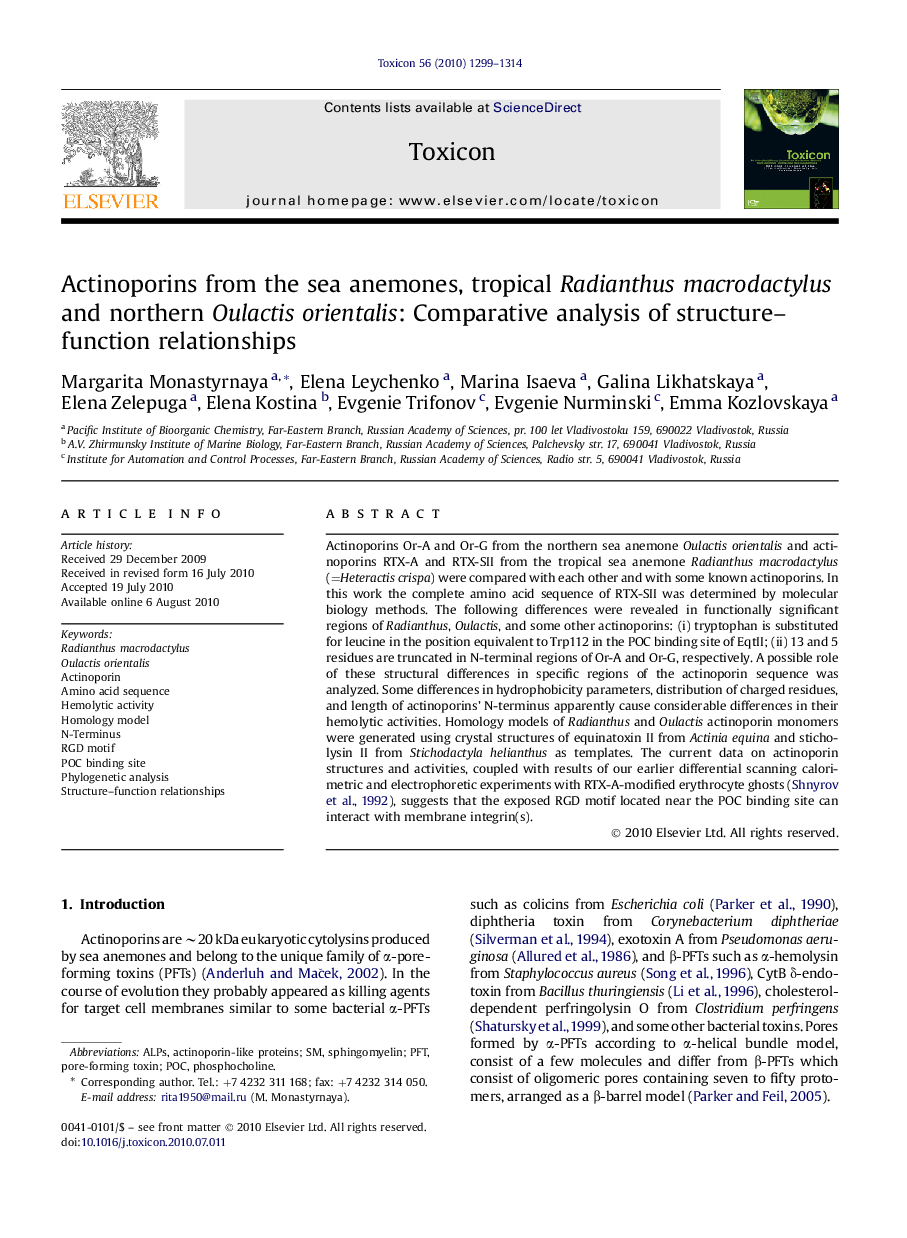| Article ID | Journal | Published Year | Pages | File Type |
|---|---|---|---|---|
| 2065045 | Toxicon | 2010 | 16 Pages |
Actinoporins Or-A and Or-G from the northern sea anemone Oulactis orientalis and actinoporins RTX-A and RTX-SII from the tropical sea anemone Radianthus macrodactylus (=Heteractis crispa) were compared with each other and with some known actinoporins. In this work the complete amino acid sequence of RTX-SII was determined by molecular biology methods. The following differences were revealed in functionally significant regions of Radianthus, Oulactis, and some other actinoporins: (i) tryptophan is substituted for leucine in the position equivalent to Trp112 in the POC binding site of EqtII; (ii) 13 and 5 residues are truncated in N-terminal regions of Or-A and Or-G, respectively. A possible role of these structural differences in specific regions of the actinoporin sequence was analyzed. Some differences in hydrophobicity parameters, distribution of charged residues, and length of actinoporins’ N-terminus apparently cause considerable differences in their hemolytic activities. Homology models of Radianthus and Oulactis actinoporin monomers were generated using crystal structures of equinatoxin II from Actinia equina and sticholysin II from Stichodactyla helianthus as templates. The current data on actinoporin structures and activities, coupled with results of our earlier differential scanning calorimetric and electrophoretic experiments with RTX-A-modified erythrocyte ghosts ( Shnyrov et al., 1992), suggests that the exposed RGD motif located near the POC binding site can interact with membrane integrin(s).
